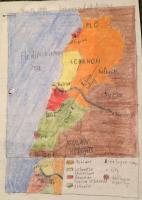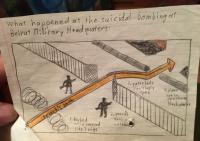Batman: A Death in the Family by Jim Starlin (1988) (read in 2020)
I received a whole pile of late 80s–early 90s comic books from my Aunt Penny, who used to run a newsstand in Mohawk, New York. She’d kept them for years and finally gave them to me for Christmas after seeing me read Le Transpierceneige on my laptop in the back of the minivan as Kath drove us around Switzerland in the fall of 2019.
She gave me the following comics:
- DC: Batman #429: A Death in the Family Part 4
- DC: Batman: A Death in the Family (books 1-4)
- DC: Batman vs. Predator (1 of 3)
- Marvel: Marvel Comics presents Wolverine #94
- Marvel: The Uncanny X-Men #285
- Marvel: The Amazing Spider-Man #357
- Marvel: The Silver Surfer #61
- Marvel: Captain America #380
- Valiant: Harbinger Files #1
- Valiant: Ninjak Yearbook #1
- Valiant: Ninjak #11
- Valiant: Ninjak #36
- Valiant: H.A.R.D. Corps #25
- Valiant: Magnus Robot Fighter Yearbook #1
- Valiant: Magnus Robot Fighter #2
- Valiant: Magnus Robot Fighter #23
- Valiant: Magnus Robot Fighter #24
- Valiant: Magnus Robot Fighter #25
- Valiant: Magnus Robot Fighter #36
- Valiant: Psi-Lords: Reign of the Star-watchers #1
There are a couple of interesting things to observe about reading comic books as a grown-ass man who reads a lot of other things. Generally, the writing is a mixed bag and the writers generally wear their politics on their sleeve—even if they don’t necessarily mean to do so. I’m honestly not sure if they’ve developed their writer’s voice far enough to express much nuance—many of them are basically hacks.
Another thing I realized was that my own attempts at making comic-book characters—which I’d found in my drawings and papers from my younger years—weren’t all that much cheesier than the stuff that was finding its way into books that were being sold for actual cash-money at the time.
That is, most of this stuff is trash that feels like it was written by 13-year–old boys who would still have trouble describing exactly where the lady-parts are.
The Valiant comic books are the most egregious in this respect.
Batman: A Death in the Family
The subject is only slighly better. It’s a four-part comic-book series, starring Batman, Robin and Joker. The rather overt national-politics angle is decidedly unsubtle. This series is basically a marketing campaign for a war on terror that was well in swing before 9-11.
The series starts with Batman firing Robin, who discovers that Batman had his his real mother from him and that she is living, conveniently enough, in the Middle East (somewhere, unspecified). The Joker, meanwhile, breaks out of Arkham Asylum, steals a nuclear weapon and also heads over to the Middle East to sell it to that arch-fiend Lebanon[1].
Batman tails the Joker to Lebanon, where he meets up with Robin—still searching for his real mother—and they thwart the Joker’s plan. Somehow, this wasn’t enough for the series, so the whole crew goes to Ethiopia where Robin’s real mother is, running an aid agency. The Joker gets there first (of course) and blackmails her into doing his bidding: basically selling real medical supplies for the money to refill the warehouse with “Joker Venom” (I’m not making that up). The Joker has some real dirt on her, so she also gives up Robin to him soon after they’re reunited.
Instead of swooping in to save the day this time, though, Batman is too late to save mother or son. The Joker tortures them, then blows them both up. Batman returns to Gotham City with coffins and no sidekick, devastated.
We were only warming up, though, with the whole slavering anti-Iran thing because, get this, now the Ayatollah Khomeini himself seeks out and hires the Joker to be his representative at the UN. Freaking Superman shows up to prevent Batman from doing anything rash—like provoking an international incident by killing the Joker at the UN headquarters, especially now that he’s representing the as-yet-not-named-that-yet Axis of Evil.
Luckily for America, the Joker can’t control himself and isn’t happy with his position of power. Instead, he’s just a lunatic who tries to kill everyone in the UN instead, leaving Batman morally and ethically free to hunt him down. They end up in a helicopter; they are both shot by one of Joker’s henchmen; they all plunge into the icy waters; Superman rescues Batman; the Joker’s body is, of course, not found.
Honestly, as with the other comics above, it’s just a bunch of revisionist, libertarian propaganda.[2]
I speak as an authority because I researched this when I was 11 years old. Hand-drawn map of the Middle East
Hand-drawn map of the Middle East Hand-drawn diagram of the attack
Hand-drawn diagram of the attack
I can’t imagine that this was a homework assignment for a 4th- or 5th-grader, but maybe it was. More likely, I copied the diagrams from Time Magazine or something. Still, I was researching US foreign policy as a young ‘un.
↩